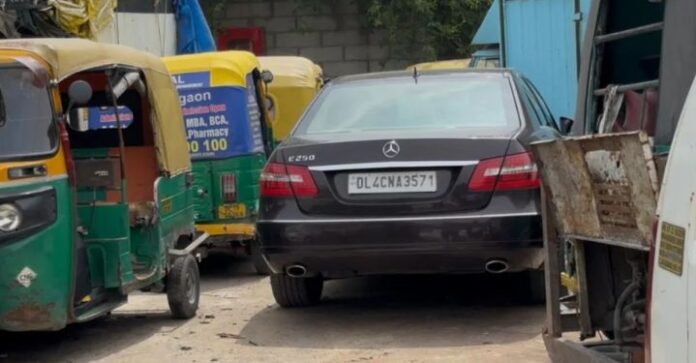In a major shift of policy, the Delhi government has decided not to enforce mandatory scrapping of old vehicles, following a groundswell of public anger and widespread criticism. The controversial rule, which had banned refueling of petrol vehicles older than 15 years and diesel vehicles older than 10 years from July 1, was met with swift backlash across the city, forcing authorities to reconsider.
Background: The Policy That Sparked a Storm
The initial directive, backed by the Commission for Air Quality Management (CAQM), aimed to curb vehicular pollution in India’s most polluted capital. It prohibited fuel stations from refueling vehicles classified as “end-of-life” (EoL) based solely on age, regardless of their actual emissions output or maintenance history.
This move affected over 60 lakh registered vehicles in Delhi, including personal cars, bikes, taxis, and even high-end vehicles in pristine condition. Fuel stations across the city were directed to use Automatic Number Plate Recognition (ANPR) systems to prevent fueling of EoL vehicles. However, poor preparedness, confusion, and long queues only added to the chaos.
The Public Outcry
Within hours of implementation, criticism poured in from all corners—car owners, mechanics, transporters, environmentalists, and policy experts. Social media erupted with stories of people being turned away from fuel stations despite having vehicles that had passed fitness tests or had low emissions. Even luxury vehicles like vintage Mercedes and classic Royal Enfields were branded “scrap” overnight.
Citizens questioned the fairness of the age-based rule. Many argued that a well-maintained 16-year-old car could be less polluting than a poorly maintained 6-year-old one. Others pointed out the financial burden of being forced to scrap functional vehicles and invest in new ones at a time of inflation and economic uncertainty.
“This is not environmentalism, it’s punishment,” said Amit Sinha, a car owner in Dwarka. “I drive barely 100 km a week. My car runs like new. Why should it be scrapped?”
The backlash wasn’t limited to just individuals. Petrol pump owners reported confusion over enforcement mechanisms, and many stations simply ignored the directive due to lack of technology or clarity.
The Government’s U-Turn
Sensing the deep frustration among residents, Delhi’s Environment Minister Manjinder Sirsa addressed the media on July 3, confirming a policy reversal.
“We understand the pain of the people,” he said. “There will be no forced scrapping of personal vehicles based on age alone. Instead, we will look at the actual condition and emissions profile of vehicles.”
The Chief Minister also acknowledged the emotional and financial distress the rule caused and assured citizens that the administration was committed to balancing environmental goals with public interest.
The revised plan now emphasizes fitness-based assessment rather than age-based categorization. Vehicles in visibly poor condition, emitting smoke, or failing pollution tests will still be subject to penalties or seizure. But those in good condition with valid documentation will not be denied fuel or forced into scrappage.
The Policy Debate: Age vs. Emissions
Delhi has long battled toxic air, particularly in winter months when air quality hits hazardous levels. Vehicular emissions are a major contributor, alongside construction dust, industrial smoke, and crop burning in nearby states. The EoL scrappage rule was one of many measures aimed at curbing emissions—but experts have repeatedly warned against oversimplifying complex pollution issues.
Automobile experts and transport economists have argued for a shift to a “use-based” or “pollution-based” model instead of blanket bans based on age.
“This was a lazy policy,” said auto analyst Rakesh Sharma. “A 15-year-old vehicle that passes fitness and emissions tests should not be treated the same as a junkyard-ready clunker.”
The revised approach may open doors for introducing annual pollution audits, vehicle grading systems, and incentives for voluntary scrappage, rather than coercion.
What Happens Now?
While the government has paused mandatory scrapping, it still faces the challenge of developing and enforcing a more refined system. Here’s what could be on the horizon:
- Mandatory Fitness Tests: Vehicles older than 10 or 15 years may need to undergo annual or biennial fitness and emissions testing.
- Digital Monitoring: Integration of real-time emissions data via telematics or IoT could become part of Delhi’s long-term strategy.
- Green Certification Incentives: Older vehicles that meet strict emission norms might receive green tags, tax rebates, or exemptions from future restrictions.
- Stronger Public Transit Push: Delhi may accelerate its investment in electric buses, metro expansion, and pedestrian infrastructure to reduce reliance on private vehicles.
Citizens React: Relief, But Caution
The rollback has come as a relief to many Delhi residents, especially middle-class families and small business owners who cannot afford new vehicles or electric alternatives. However, trust in policy execution remains low.
“What happens six months from now?” asked Nisha Batra, a resident of South Delhi. “Will they quietly bring the rule back after elections?”
Others called for better stakeholder consultation before enacting such drastic measures in the future. Public interest litigations have already been filed challenging age-based rules in court, and the judiciary’s stance may shape long-term outcomes.
Looking Ahead: Smarter Green Policies Needed
Delhi’s quick U-turn reflects the fine balance between environmental necessity and public feasibility. Air pollution remains a critical health crisis, but overly harsh, one-size-fits-all solutions risk alienating the very citizens whose cooperation is crucial for success.
The coming months will be critical in crafting a new framework—one that ensures cleaner air without punishing responsible vehicle owners. Authorities must also communicate changes clearly, avoid abrupt rollouts, and base enforcement on science, not bureaucratic convenience.
The people of Delhi have spoken—and now the challenge is to listen, reform, and implement with both urgency and empathy.

